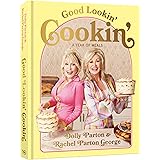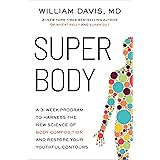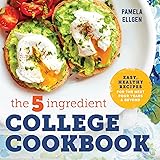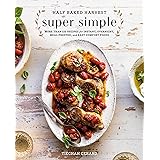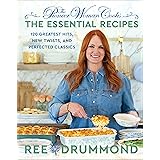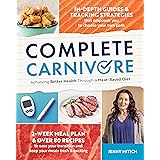The recent video above highlights a direct and often heated confrontation between a dairy farmer and a vegan activist, underscoring the deep divisions and misunderstandings surrounding modern dairy farming practices. This exchange brings to light fundamental questions about animal welfare, ethical food production, and the language used to describe agricultural processes. While the debate in the video is intense, it offers a crucial opportunity to delve deeper into the differing perspectives and clarify some common misconceptions about how dairy farms operate, particularly those focused on more traditional or natural methods.
Navigating the Nuances of Dairy Farming Practices
One of the central points of contention in the video revolves around the term “rape” in the context of animal breeding. The activist uses this strong word to describe artificial insemination (AI), a common practice in conventional dairy operations. However, the farmer in the video quickly counters, stating he does not use AI, opting instead for natural breeding where his “bucks run with [his] herd.” This immediate contrast reveals a significant spectrum within ethical dairy farming itself, moving beyond a single, generalized perception of the industry.
Artificial insemination, for many larger dairy farms, is a method of controlled breeding to improve genetics and herd health efficiently. It involves manually introducing semen into a female animal. From an animal welfare perspective, it’s a procedure that needs to be performed skillfully and with minimal stress to the animal. In contrast, natural breeding, as described by the farmer, allows animals to mate freely. This method resonates more with those who prioritize animals acting on their natural instincts and choices, viewing it as a more humane approach to animal reproduction. Understanding this distinction is vital for anyone seeking to comprehend the complexities of animal agriculture and the various paths farmers take.
Artificial Insemination vs. Natural Breeding: A Closer Look
When considering different dairy farming practices, the choice between artificial insemination (AI) and natural breeding often sparks intense debate. For many conventional dairy farms, AI is a cornerstone of their breeding program. It allows for genetic selection, ensuring calves inherit desired traits like milk production efficiency or disease resistance. Farmers can select specific sires to improve their herd over generations, leading to healthier, more productive animals. However, this process requires human intervention, and some animal welfare advocates argue it bypasses natural animal choice.
Conversely, natural breeding, as practiced by the farmer in the video, involves allowing male animals (bucks in his case, or bulls for cows) to mate with females when they are in season. This mimics the wild, where animals choose their mates. Proponents of natural breeding often highlight the autonomy it gives animals and the reduced human intervention. It’s seen as a gentler approach, aligning more closely with traditional husbandry. However, natural breeding can be less efficient in terms of genetic improvement and may introduce other management challenges, such as ensuring the right ratio of males to females for optimal reproduction and managing larger, potentially aggressive, males.
The farmer’s strong assertion, “it’s their choice. Nature’s choice,” truly encapsulates the philosophy behind his particular approach to animal welfare in dairy. It underscores a commitment to allowing animals to follow their natural biological rhythms and social structures, rather than imposing human-engineered systems. This isn’t just a technical difference; it’s a philosophical one that deeply impacts how consumers perceive the ethics of their milk supply.
Calf Care and “Excess Milk”: Rethinking Dairy Production
Another major point of contention in the dairy debate is the separation of calves from their mothers and the subsequent use of milk. The activist asserts that cows are “brutally murdered every year” and questions the profit motive, while the farmer explicitly states, “We allow our kids to stay on their mother. We only take the excess milk.” This statement directly challenges the common narrative that all dairy farms immediately separate calves and take all milk for human consumption, often leaving none for the young.
In conventional dairy, it is common practice to separate calves from their mothers shortly after birth. This is often done to protect the calf from potential injury by the mother, to prevent disease transmission, and to ensure the calf receives a controlled amount of colostrum and then milk replacer or collected milk. This also allows for all milk produced by the mother to be harvested for human consumption, maximizing output. Critics of this system argue it’s emotionally distressing for both the cow and calf and is driven purely by commercial interests.
However, the farmer in the video describes a different model. The concept of “excess milk” implies a system where calves are allowed to nurse, and only the milk not consumed by the calves, or beyond what they need for healthy growth, is then collected for sale. This approach suggests a different kind of balance between animal welfare and production, aligning with more traditional or small-scale farming methods where the well-being of the young and mother takes precedence before commercial harvest. It’s akin to how a family might share a fruit tree – taking what’s needed, but leaving plenty for the tree itself and perhaps for local wildlife, rather than clear-cutting for maximum commercial yield.
Are Animals Commodities? Understanding the Farmer’s Perspective
The conversation inevitably turns to the economic aspect of farming, with the activist stating, “But you’re making profit from animals, right? They’re commodities to you.” This question touches on a core ethical dilemma for many consumers: whether it’s morally acceptable to profit from animals. The farmer’s response, “No. I sell their milk so that they can get food,” provides a crucial alternative perspective on the financial arrangement within his sustainable agriculture model.
The term “commodity” typically refers to a raw material or primary agricultural product that can be bought and sold. When applied to animals, it suggests they are simply units of production, devoid of individual sentience or intrinsic value. For many large-scale industrial operations, animals can indeed be viewed and managed as commodities, where efficiency and output are paramount. This perspective is a major driver for animal rights activism and veganism.
However, the farmer’s retort frames the financial transaction not as exploitation, but as a reciprocal relationship. By selling milk, he generates income that directly supports the care, feeding, and shelter of his animals. In this view, the animals are not merely objects of profit but partners in a livelihood that sustains both them and the farmer. This perspective shifts the narrative from one of pure extraction to one of interdependence, where the animals’ well-being is directly tied to the farm’s economic viability. This is a common sentiment in many small-scale and family farms, where the lines between “livestock” and “family members” can often blur due to close daily interaction and care.
Beyond the Confrontation: Towards Informed Consumer Choices
The intense exchange in the video, while confrontational, serves as a powerful reminder of the diverse realities within dairy farming practices. It highlights that not all farms operate under the same principles or use the same methods. While some conventional farms may prioritize efficiency and scale, others, like the one described by the farmer, may focus on natural processes, animal choice, and a more symbiotic relationship between humans and animals.
For consumers concerned about animal welfare and ethical food choices, this distinction is incredibly important. Rather than painting all dairy farms with the same brush, it encourages a deeper inquiry into where food comes from. Exploring options like local farms, understanding their specific practices, and asking questions about breeding methods, calf care, and how “excess milk” is managed can empower individuals to make choices that align with their personal values regarding animal welfare in dairy and sustainable living.
The conversation about ethical dairy farming is far from over. It is a dynamic field, constantly evolving with new research, consumer demands, and technological advancements. What remains clear is that engaging with the specifics of how animals are treated and understanding the diverse approaches farmers take is key to moving beyond generalized criticisms and toward a more nuanced, informed discussion about our food systems.


